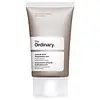What's inside
What's inside
 Key Ingredients
Key Ingredients

 Benefits
Benefits

 Concerns
Concerns

 Ingredients Side-by-side
Ingredients Side-by-side

Water
Skin ConditioningIsodecyl Neopentanoate
EmollientDimethicone
EmollientAzelaic Acid
BufferingDimethicone/Bis-Isobutyl PPG-20 Crosspolymer
EmollientDimethyl Isosorbide
SolventHydroxyethyl Acrylate/Sodium Acryloyldimethyl Taurate Copolymer
Emulsion StabilisingPolysilicone-11
Isohexadecane
EmollientTocopherol
AntioxidantTrisodium Ethylenediamine Disuccinate
Isoceteth-20
EmulsifyingPolysorbate 60
EmulsifyingTriethanolamine
BufferingEthoxydiglycol
HumectantPhenoxyethanol
PreservativeChlorphenesin
AntimicrobialWater, Isodecyl Neopentanoate, Dimethicone, Azelaic Acid, Dimethicone/Bis-Isobutyl PPG-20 Crosspolymer, Dimethyl Isosorbide, Hydroxyethyl Acrylate/Sodium Acryloyldimethyl Taurate Copolymer, Polysilicone-11, Isohexadecane, Tocopherol, Trisodium Ethylenediamine Disuccinate, Isoceteth-20, Polysorbate 60, Triethanolamine, Ethoxydiglycol, Phenoxyethanol, Chlorphenesin
Water
Skin ConditioningCyclohexasiloxane
EmollientBifida Ferment Lysate
Skin ConditioningGlycerin
HumectantPropanediol
SolventAlcohol Denat.
AntimicrobialPolysilicone-11
Dimethicone
EmollientPolymethylsilsesquioxane
Di-C12-13 Alkyl Malate
EmollientAmmonium Polyacryloyldimethyl Taurate
Emulsion StabilisingCaprylic/Capric Triglyceride
MaskingBis-PEG/PPG-16/16 PEG/PPG-16/16 Dimethicone
EmollientPEG-10 Dimethicone
Skin ConditioningPhenoxyethanol
PreservativeCarbomer
Emulsion StabilisingPtfe
Ceteareth-20
CleansingTriethanolamine
BufferingBoron Nitride
AbsorbentChlorphenesin
AntimicrobialVitreoscilla Ferment
Skin ConditioningPotassium Cetyl Phosphate
EmulsifyingAscorbyl Glucoside
AntioxidantHydrogenated Vegetable Oil
EmollientAcrylates/C10-30 Alkyl Acrylate Crosspolymer
Emulsion StabilisingCI 77947
Adenosine
Skin ConditioningPentylene Glycol
Skin ConditioningTrisodium Ethylenediamine Disuccinate
Synthetic Fluorphlogopite
Mica
Cosmetic ColorantSodium Hyaluronate
HumectantChlorhexidine Digluconate
AntimicrobialFaex Extract
Skin ConditioningPolygonum Fagopyrum Seed Extract
Skin ConditioningSodium Benzoate
MaskingSilica
AbrasiveChlorella Vulgaris Extract
Skin ConditioningBiosaccharide Gum-1
HumectantPentaerythrityl Tetra-Di-T-Butyl Hydroxyhydrocinnamate
AntioxidantParfum
MaskingWater, Cyclohexasiloxane, Bifida Ferment Lysate, Glycerin, Propanediol, Alcohol Denat., Polysilicone-11, Dimethicone, Polymethylsilsesquioxane, Di-C12-13 Alkyl Malate, Ammonium Polyacryloyldimethyl Taurate, Caprylic/Capric Triglyceride, Bis-PEG/PPG-16/16 PEG/PPG-16/16 Dimethicone, PEG-10 Dimethicone, Phenoxyethanol, Carbomer, Ptfe, Ceteareth-20, Triethanolamine, Boron Nitride, Chlorphenesin, Vitreoscilla Ferment, Potassium Cetyl Phosphate, Ascorbyl Glucoside, Hydrogenated Vegetable Oil, Acrylates/C10-30 Alkyl Acrylate Crosspolymer, CI 77947, Adenosine, Pentylene Glycol, Trisodium Ethylenediamine Disuccinate, Synthetic Fluorphlogopite, Mica, Sodium Hyaluronate, Chlorhexidine Digluconate, Faex Extract, Polygonum Fagopyrum Seed Extract, Sodium Benzoate, Silica, Chlorella Vulgaris Extract, Biosaccharide Gum-1, Pentaerythrityl Tetra-Di-T-Butyl Hydroxyhydrocinnamate, Parfum
 Reviews
Reviews

Ingredients Explained
These ingredients are found in both products.
Ingredients higher up in an ingredient list are typically present in a larger amount.
Chlorphenesin is a synthetic preservative. It helps protect a product against bacteria in order to extend shelf life. In most cases, Chlorphenesin is paired with other preservatives such as phenoxyethanol and caprylyl glycol.
Chlorphenesin is a biocide. This means it is able to help fight the microorganisms on our skin. It is also able to fight odor-releasing bacteria.
Chlorphenesin is soluble in both water and glycerin.
Studies show Chlorphenesin is easily absorbed by our skin. You should speak with a skincare professional if you have concerns about using Chlorphenesin.
Learn more about ChlorphenesinDimethicone is a type of synthetic silicone created from natural materials such as quartz.
What it does:
Dimethicone comes in different viscosities:
Depending on the viscosity, dimethicone has different properties.
Ingredients lists don't always show which type is used, so we recommend reaching out to the brand if you have questions about the viscosity.
This ingredient is unlikely to cause irritation because it does not get absorbed into skin. However, people with silicone allergies should be careful about using this ingredient.
Note: Dimethicone may contribute to pilling. This is because it is not oil or water soluble, so pilling may occur when layered with products. When mixed with heavy oils in a formula, the outcome is also quite greasy.
Learn more about DimethiconePhenoxyethanol is a preservative that has germicide, antimicrobial, and aromatic properties. Studies show that phenoxyethanol can prevent microbial growth. By itself, it has a scent that is similar to that of a rose.
It's often used in formulations along with Caprylyl Glycol to preserve the shelf life of products.
Polysilicone-11 is a film-forming silicone that creates a non-tacky and matte finish on the skin. It's commonly used to improve texture, absorb excess oil, and help active ingredients spread evenly.
Due to its "rubber-like" structure, it stays on the skin's surface instead of being absorbed. On the skin, it creates a flexible layer that enhances wearability and stability.
Triethanolamine is an emulsifier and pH adjuster. It is created using ethylene oxide and ammonia. This gives Triethanolamine a nitrogen core and a similar scent to ammonia.
As an emulsifier, it prevents ingredients from separating and enhances texture by adding volume to a product.
PH adjusters are common in cosmetic products. The pH of a product can affect the effectiveness of other ingredients. A product with a high pH may also irritate the skin.
Learn more about TriethanolamineTrisodium Ethylenediamine Disuccinate is used to help stabilize a product.
It is a chelating agent, meaning it helps prevent metal ions from binding to other ingredients. This prevents unwanted reactions in products. Metal ions can come into a product via the water ingredient. They are found in trace amounts and are not known to be harmful.
Water. It's the most common cosmetic ingredient of all. You'll usually see it at the top of ingredient lists, meaning that it makes up the largest part of the product.
So why is it so popular? Water most often acts as a solvent - this means that it helps dissolve other ingredients into the formulation.
You'll also recognize water as that liquid we all need to stay alive. If you see this, drink a glass of water. Stay hydrated!
Learn more about Water